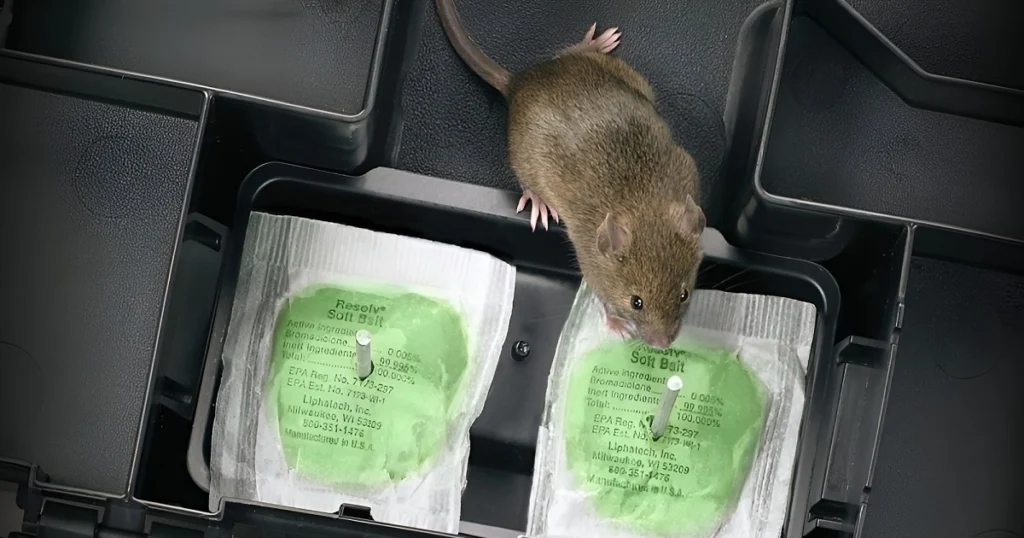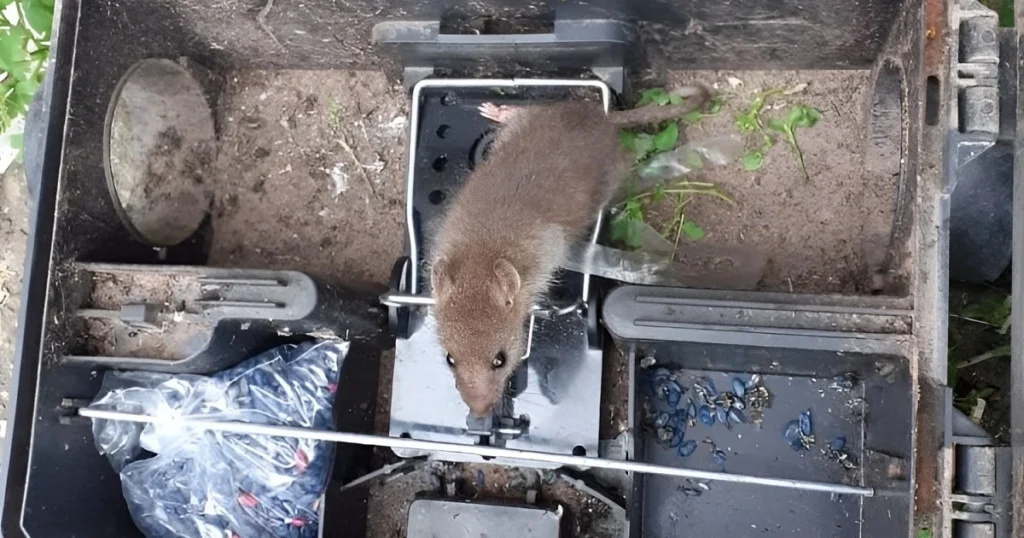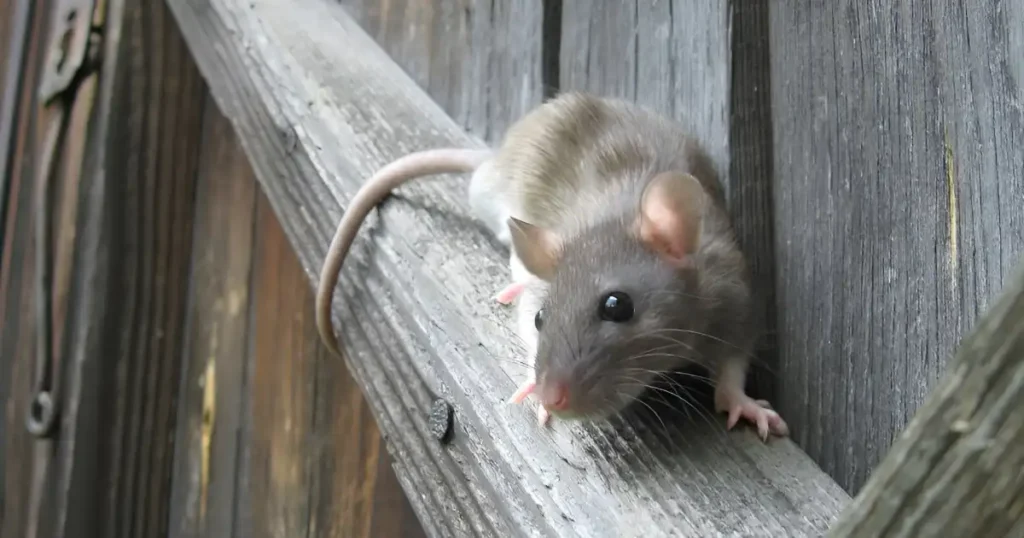
Bait boxes for mice are commonly used in pest control to manage rodent populations. These boxes are designed to attract mice with bait and trap them inside, preventing them from causing further damage or spreading disease. Bait boxes can be used indoors and outdoors, making them a viable solution for homeowners and businesses.
Bait boxes for mice are available in various shapes and sizes, but they all serve the same purpose: to lure and trap mice into the box. The boxes are typically made of durable plastic or metal and feature a small entrance hole that allows mice to enter but prevents larger animals from accessing the bait block. Once inside, the mouse is trapped and cannot escape. Some bait boxes use a snap trap mechanism, while others use glue or poison bait.
Proper safety protocols must be followed when using bait boxes for mice to prevent accidental exposure to the bait or harm to non-target animals. Bait boxes should be placed where mice are known to transit, such as walls or nearby food sources. Regular monitoring and maintenance of the boxes are also necessary to ensure they function properly and dispose of trapped mice.

Bait boxes are a popular and effective option for controlling mouse infestations. These boxes are designed to pull mice with bait and trap or kill them. Understanding how bait boxes work and the types available can help choose the best option.
There are several types of bait boxes for mice, including:
Bait boxes attract and kill mice by combining bait and a trap mechanism. The bait is placed inside the box, and the trap mechanism is triggered when the mouse enters the box to eat the bait.
Using the right type of bait for your bait box is essential. Mice are attracted to sweet and fatty foods, so peanut butter, chocolate, and bacon grease are good options. It is also important to place the bait box in the right location. Mice travel along walls, so placing the box in a corner or against a wall can increase its effectiveness.
Overall, bait boxes for mice are a reliable and effective way to control infestations. By understanding the different types of bait boxes, you can choose the right option for your needs.

Bait boxes for mice are an effective tool for controlling rodent infestations. They provide a safe and efficient way to deal with mice without harming humans or pets. Here are some of the benefits of using bait boxes:
Mice bait boxes are designed with safety in mind. They are made of sturdy materials that can withstand harsh weather conditions and are tamper-resistant to prevent accidental exposure to children or pets. The boxes also come with a locking mechanism that ensures the bait stays inside and prevents mice from escaping with the bait.
Bait boxes are an effective tool for controlling mice infestations. They work by luring mice into the box with bait blocks for mice, which are toxic to the rodents. When the mice consume the bait, they die within a few days. Bait boxes also prevent mice from developing resistance to the bait, which can happen when using other methods such as traps.
Using bait boxes for mice is an efficient and safe way to control rodent infestations. They incorporate safety features that prevent accidental exposure to children and pets and effectively control mice populations. Using bait boxes, homeowners can ensure they are free from mice without harming their loved ones.

When choosing the right bait for your mouse bait box, there are a few things to consider. The type of bait you choose can affect its effectiveness, so it's important to choose wisely. We share some advice to help you make the right choice.
Several types of bait are commonly used in mouse bait boxes. One of the most popular types is bait blocks. These blocks are made from a mixture of food-grade ingredients designed to attract mice. They can be easily used in bait boxes for outdoor use.
Another type of bait that is commonly used in mouse bait boxes is poison bait. Poison bait is designed to kill mice quickly and effectively. However, it must be used cautiously, as it can harm pets and other animals if ingested.
Once you have chosen the right type of bait for your mouse bait box, placing it in the right location is important. A few tips can help you get the most out of your bait box:
Following these tips and choosing the right bait for your mouse bait box, you can effectively control mice and keep away from your home or business.

Bait boxes are a highly effective way to control mouse infestations. However, proper installation and placement are crucial for their effectiveness. In this section, we will discuss some indoor and outdoor placement strategies for bait boxes.
When placing bait boxes indoors, it is important to consider the areas where mice usually pass by. Mice tend to follow walls and other vertical surfaces, so the best placement is against walls or corners. Bait boxes should also be placed in areas out of reach of children and pets.
It is recommended to place bait boxes every 8 to 12 feet along walls or in areas where mice are commonly seen. Bait boxes should also be placed in areas with evidence of mouse activity, such as droppings or gnaw marks.
Outdoor bait boxes for mice are typically used to control mice populations around buildings and other structures. When placing bait boxes outdoors, it is important to consider the potential impact on non-target animals. Bait boxes should be placed in areas inaccessible to pets, livestock, and wildlife.
Bait boxes should also be placed where mice are likely to travel, such as along fences or walls. They should be placed around a building or structure every 30 to 50 feet.
In addition to proper placement, inspecting and maintaining bait boxes to ensure their effectiveness regularly is important. Bait boxes should be checked at least once a month to ensure they are still secure and the bait has not been depleted.
Proper installation and placement of bait boxes are essential for effective mouse control. By following these strategies, individuals can control indoor and outdoor mouse populations successfully.

To ensure the mouse bait box's efficacy, regular maintenance is important. This includes checking the bait box at least once a week to see if it needs to be refilled or if any dead mice need to be removed. Using gloves when handling the bait box is also important to avoid contact with harmful substances.
If the bait box is damaged or broken, it should be replaced immediately. The area around the bait box must also be kept clean and free of debris to prevent contamination.
While mouse bait boxes effectively control mice, they can also affect pets and children if not used properly. To prevent ingestion, keep the bait box out of the reach of pets and children.
The bait box should be placed in areas inaccessible to pets and children. A tamper-resistant bait box is also important to prevent accidental exposure.
If you accidentally expose yourself to mouse bait, seek medical attention immediately. Symptoms of mouse bait poisoning in pets and children include vomiting, lethargy, diarrhea, and loss of appetite.
By following these maintenance and safety precautions, users can ensure the mouse bait box's effectiveness while protecting their pets and children from potential harm.

Sometimes DIY solutions like bait boxes may not completely eradicate the problem when dealing with mice. This is where Critter Stop, a professional and humane wildlife removal company, comes into play. Critter Stop offers comprehensive pest control services that extend beyond simple bait setups to tackle the root of your infestation with sustainable and effective strategies.
Critter Stop has earned a fantastic reputation, backed by stellar customer reviews online, for providing high-quality work and exceptional customer service. These accolades come from our commitment to solving each client's unique pest challenges thoroughly and humanely.
Don't hesitate to take action if you're struggling with persistent rodents or other wildlife issues. Contact Critter Stop at (214) 234-2616 for a free inspection. Our experienced team is ready to assess your situation and recommend the best action to reclaim your property from unwanted guests.
The best bait boxes for mice should have a sturdy and tamper-resistant construction, a secure locking mechanism, and a clear inspection window. Additionally, they should have a removable tray for easy cleaning and refilling.
A bait box for mice is a tool for controlling and eliminating mouse infestations. It contains bait blocks that attract mice, which consume the bait and eventually die.
The cost of mice bait boxes varies depending on the brand, size, and features. Generally, they can range from a few dollars to over $50.
The most common active ingredient in bait blocks for mice is bromadiolone, which is a potent anticoagulant that causes internal bleeding in mice.
High-fat and high-protein foods, such as peanut butter, bacon, and chocolate, are the most effective bait for mouse bait stations.
Yes, mouse bait stations can be used both indoors and outdoors. However, ensuring they are placed in a secure and dry location is important to prevent tampering and water damage.
When using bait boxes for mice around pets and children, placing them in inaccessible areas is important. Additionally, it is recommended to use tamper-resistant bait boxes and to handle the bait with gloves to prevent accidental ingestion.
Mouse bait station refills should be replaced every 1-2 months or after the bait is consumed. Regular inspection is important to ensure the station is still secure and in good condition.
While mice bait boxes are designed to target mice, they may also attract other small animals, such as squirrels or chipmunks. Monitoring the bait box regularly and removing any other animals that may become trapped is important.
Outdoor bait boxes for mice should be placed in areas protected from the elements and inaccessible to pets and children. They should also be placed near areas where mice are likely to be present, such as garbage cans or dark corners.
Professional-grade mouse bait stations are often more effective than DIY solutions because they are designed to be tamper-resistant and made with high-quality materials. Professional-grade bait stations may also contain more potent bait formulations that effectively eliminate mice infestations.
Visit our Critter Library and learn more about our furry friends